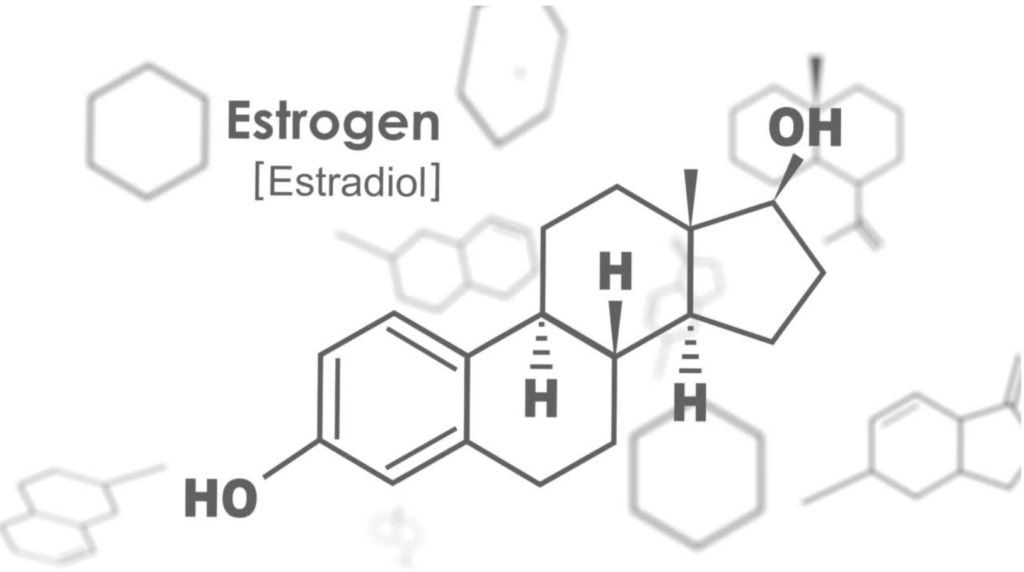Avoid BPA-contaminated plastic. Eat organic food. Use paraben-free lotion. Aside from the nebulous “be healthy” goal, these three actions seek to avoid a very specific type of compound. BPA, certain pesticides, and parabens all fall under the category of synthetic xenoestrogens, or “foreign” estrogens, which are increasingly being linked to serious and concerning health conditions. These problems include certain cancers (including those of the reproductive system, breast, lung, kidney, pancreas, and brain), diabetes, obesity, endometriosis, neurological diseases and disorders (including multiple sclerosis, ADHD, and autism), asthma, premature puberty, immune-related disease, heart disease, and infertility.
Xenoestrogens mimic the biological functions of the sex hormone estrogen, which is most commonly known to regulate the female reproductive system. Additionally, it serves other functions within the body, including supporting brain development, bone density, cardiovascular health, neurological function, balance of electrolytes, and cholesterol mobilization. Estrogen can bind to receptors both inside (intracellular) and outside (membrane-bound) of cells. These receptors include the intracellular receptors ERα and ERβ, as well as the membrane receptor GPER1. ERα and ERβ are primarily found in the reproductive, digestive, and nervous systems as well as bone tissue, while GPER1 is primarily in the reproductive system and bone tissue. Estrogen can begin cellular signaling pathways after binding to its receptor. Having the appropriate amount of estrogen is critical for overall health. Too much estrogen can lead to heavy menstrual periods, mood disorders, sleep problems, cystic breasts, thyroid and gallbladder disease, endometriosis, and headaches. Too little estrogen can lead to osteoporosis, obesity, and cardiovascular disease, as well as other health concerns, such as moodiness, fatigue, decreased libido, and irregular menstrual periods.

Unfortunately, today, the presence of synthetic xenoestrogens can tip this quite delicate balance. The most well-known synthetic xenoestrogen is bisphenol-A (BPA), which binds to ERα more tightly than estrogen does. BPA was first synthesized in 1891 and made its way into plastics in the 1950s. Not until 1993 did chemists at Stanford detect its estrogen-mimicking capability. BPA is not the only guilty compound in our environment. Synthetic xenoestrogens are found abundantly in plastics, perfumes, pesticides, cosmetics, and pharmaceutical contraceptives. A sample list of synthetic xenoestrogens can be found in Table 2 here. Because of their widespread use, water sources are heavily contaminated, increasing exposure to entire communities and world-wide health risks. To put a price-tag on it, it was estimated that all endocrine disrupting compounds (EDCs) – a broader category which includes synthetic xenoestrogens – costs the United States $340 billion annually.
Not all xenoestrogens necessarily cause adverse events. Naturally occurring xenoestrogens, also called phytoestrogens, are found in plants, particularly in soy. Unlike their synthetic counterparts, phytoestrogens are thought to have anti-estrogenic effects and can potentially decrease the risk of breast cancer, for instance. These desired health effects are thought to arise from the potential for a greater likelihood to bind to two ER receptors: ERα (negative health consequences) and ERβ (positive health benefits). Many phytoestrogens bind more strongly to ERβ, while synthetic xenoestrogens more strongly bind to ERα. Clinical trials are currently trying to decipher the health benefits of phytoestrogens, and more research is needed to clearly elucidate this effect.
Eliminating synthetic xenoestrogen exposure and potentially increasing phytoestrogen intake may not be the solution – or even a feasible solution – for most people. However, at least reducing synthetic xenoestrogen exposure is a necessity, especially as cancer rates continue to rise and estrogen-dominance becomes increasingly more prevalent. When possible, making the choice to purchase organic fruits and vegetables, use paraben-free cosmetics, store food in glass and ceramic containers rather than plastics, and filter water may have long-term beneficial health effects.
Peer Editor: Sarah Harris
Wow. Seems like this stuff is everywhere and conscious consumerism is a must these days. Thanks for educating me today!